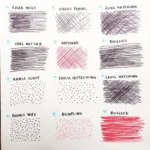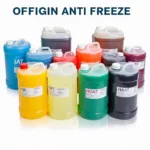Caramel color is a widely used food coloring found in everything from sodas to baked goods. But does caramel color have dairy? This is a common question, especially for those with dairy allergies or sensitivities, and we’re here to provide a definitive answer.
Understanding Caramel Color: More Than Just Burnt Sugar
While the name might evoke images of melted sugar in a saucepan, the caramel color used in food products is often far more complex. It’s created by heating carbohydrates, and these can come from a variety of sources like corn, sugar cane, or even sometimes dairy. This heating process creates a brown coloring that ranges in hue from light amber to a deep, almost black, brown. There are four classes of caramel color (I, II, III, and IV), each with different properties and manufacturing methods.
Does Caramel Color Contain Dairy? It Depends.
The simple answer is: sometimes. While most caramel color is dairy-free, Class III and IV caramel color can sometimes be manufactured using milk or dairy derivatives as a carbohydrate source. This means that if you have a severe dairy allergy, you should exercise caution when consuming products containing caramel color.
How to Identify Caramel Color with Dairy
Unfortunately, food labels aren’t always clear about the specific class of caramel color used. While some manufacturers voluntarily label their products “dairy-free” or specify the type of caramel color, others don’t. If you’re unsure, contacting the manufacturer directly is the best way to determine if a product contains dairy-derived caramel color.
Navigating Food Labels: Tips for Dairy-Sensitive Individuals
If you’re trying to avoid dairy, navigating food labels can be challenging. Here are some tips to help you identify potential sources of hidden dairy:
- Read Ingredient Lists Carefully: Look for any mention of milk, lactose, casein, whey, or other dairy derivatives.
- Check for Allergen Statements: Many manufacturers include allergen statements that clearly indicate the presence of dairy.
- Contact the Manufacturer: When in doubt, reach out to the manufacturer directly to inquire about the ingredients and manufacturing process.
- Look for Certifications: “Certified Vegan” products guarantee the absence of animal products, including dairy. However, not all dairy-free products are vegan.
Caramel Color and Allergies: What You Need to Know
Caramel color allergy is extremely rare, but reactions can occur. These reactions are usually mild and may include hives or itching. However, it’s important to differentiate between a true caramel color allergy and a reaction to the sulfites sometimes used in its production. If you suspect you have an allergy, consult with an allergist for proper testing and diagnosis.
 Allergy Testing for Caramel Color and Dairy
Allergy Testing for Caramel Color and Dairy
What Color Is Caramel Color?
Ironically, the color of caramel color can vary considerably! It can range from a light yellowish-brown to a deep, dark brown, almost black. The specific color depends on the manufacturing process and the type of carbohydrate used. This variety allows manufacturers to achieve the desired shade in their products. Similar to what color is sweetened condensed milk supposed to be, the color can be indicative of the ingredients and processing involved.
Beyond Dairy: Other Considerations with Caramel Color
While dairy is a primary concern for many, there are other factors to consider with caramel color. Class IV caramel color, in particular, has been linked to potential health concerns due to the byproducts formed during its production. While regulatory agencies generally consider caramel color safe, some individuals choose to avoid it altogether. Just like understanding what color is coconut milk, it’s beneficial to be aware of the potential variations and implications.
Is Caramel Color Vegan?
Not always. As mentioned earlier, Class III and IV caramel color can sometimes be derived from dairy, making them unsuitable for vegans. Class I and II caramel colors are generally vegan-friendly, as they don’t typically use dairy products in their production. However, always check labels and contact the manufacturer for confirmation if you’re following a strict vegan diet. As with knowing de qué color es la leche, understanding the source of ingredients is crucial for informed dietary choices.
Caramel Color and Your Diet: Making Informed Choices
Ultimately, the decision of whether or not to consume caramel color is a personal one. By understanding the different classes of caramel color and their potential dairy content, you can make informed choices that align with your dietary needs and preferences.
In conclusion, does caramel color have dairy? Sometimes. While many caramel colors are dairy-free, certain classes may be produced using dairy derivatives. Careful label reading and contacting manufacturers are crucial for avoiding dairy if you have an allergy or sensitivity.
FAQ
- What is caramel color?
- Is all caramel color the same?
- How can I tell if caramel color contains dairy?
- What are the different classes of caramel color?
- Are there any health concerns associated with caramel color?
- Is caramel color vegan?
- What should I do if I suspect I have a caramel color allergy?
Need help with choosing the perfect colors for your next project? Contact us at Phone Number: 0373298888, Email: [email protected] or visit us at 86 Cầu Giấy, Hanoi. Our customer service team is available 24/7.

